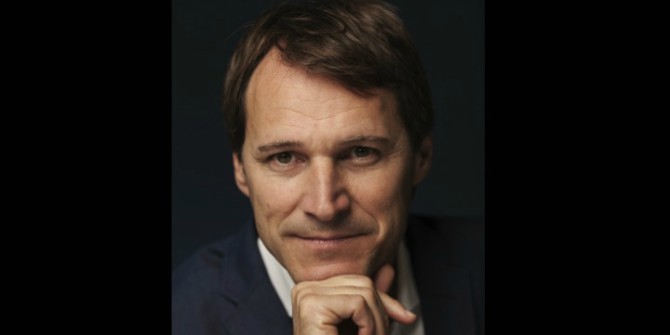Narcissism can hardly go unnoticed in interpersonal relationships, with its characteristic self-focus and insensitivity to other people’s perspectives. When the narcissist is the chief executive, the whole top management team can be affected. Lorenz Graf-Vlachy and colleagues analysed the LinkedIn profiles of CEOs and found that the narcissistic ones tend to hire narcissistic executives as top managers, leading to specific underlying dynamics in leadership teams.
Narcissism is a fascinating personality trait that has long intrigued both the corporate world and the public. And this is for good reason. After all, narcissists combine several interesting and consequential characteristics. Not only do they often come across as impressive and are seen as projecting strong authority, but they are also frequently considered arrogant, self-absorbed and entitled.
In a leadership context, narcissism is therefore often seen as a double-edged sword. In many cases, it can manifest in positive qualities such as confidence and charisma, with several favourable consequences. For instance, an individual’s narcissism is positively related to their likelihood of rising to a leadership position in the first place, since they feel intrinsically called to lead others. Most people consider typical narcissistic traits, such as charisma and confidence, as important characteristics of leaders, making narcissists attractive candidates for leadership positions. However, these characteristics can be detrimental, entailing an excessive self-focus and substantial insensitivity to others’ perspectives. In other words, narcissistic leaders are often perceived as severely lacking in interpersonal performance and integrity.
Narcissism in CEOs
Not surprisingly, management researchers have taken an interest in the narcissism of the most important leader in a firm, the chief executive officer (CEO). They found, for example, that more narcissistic CEOs tend to pursue certain corporate policies such as engaging in more and larger M&A initiatives. They also found that more narcissistic CEOs may invest more aggressively in radical innovation and may even produce more product innovations overall. But narcissistic CEOs also engage more in interpersonal manipulation or aggressive tax avoidance and make their firms more vulnerable to lawsuits.
Importantly, however, narcissism is a personality trait that is fundamentally social. It affects how individuals relate to and interact with others. For example, narcissists constantly strive for positive affirmation from others – potentially even at the cost of interpersonal relationships. This raises the question of how CEOs’ narcissism influences with which individuals CEOs decide to work together, and how this plays out.
Top managers’ narcissism on LinkedIn
Our research made innovative use of social media profiles to gauge executive personality. Top managers of large firms do not usually have the time or inclination to respond to surveys (and even if they did, they may not want to admit to scoring high on narcissism). We had to develop a new approach. We captured how they portray themselves in their personal LinkedIn profiles and looked for signs of authority, self-absorption, superiority and entitlement. For instance, we considered how many pictures of themselves they had on their profile, how much they wrote about themselves and how many skills and credentials they listed.
Top management teams
In our research, my co-authors and I studied how narcissistic CEOs configure their top management teams, and how this decision affects the dynamics between them. Our study reveals a startling trend: CEOs with higher levels of narcissism tend to appoint top management team members who mirror themselves in narcissism. In other words, narcissists hire other narcissists into their leadership teams. This is because narcissists are initially attracted to the narcissistic tendencies of others. Narcissists typically make a good first impression on others — for example during job interviews or presentations — because they are skilful speakers and superficially charming. They are smooth talkers that can stir enthusiasm, and they are perceived as strong and competent. In addition, people in general are attracted to others who are similar to them, and narcissists, in particular, like to surround themselves with other individuals who exhibit signs of excellence. All of this makes narcissistic executives appealing to narcissistic CEOs and suggests that they are likely to want to work together.
But the fact that narcissistic CEOs hire narcissistic executives not only shapes the team’s composition but also affects team dynamics and stability. Narcissists need positive affirmation from others and want to dominate them, too. When they meet in a top management team, it is thus likely rife with conflict. Naturally, the infighting that is likely to ensue may lead to ineffective work in the top management team. At some point, the CEO or the board may have to step in and remove one or more top managers. For a narcissistic CEO, dismissing a top management team member may even be a welcome opportunity to demonstrate their dominance both towards internal and external audiences. In other cases, managers themselves may decide that working in such an environment is not what they want and leave on their own volition. In both cases, the ripple effect of a narcissistic CEO leads to higher turnover within top management teams. This, of course, may reduce organisational continuity and effectiveness.
Takeaways
These insights about the effects of CEO narcissism are vital in understanding the underlying dynamics of leadership teams. Our study encourages a re-evaluation of executive selection processes, emphasising the need for a balanced approach to leadership traits. Depending on the strategies and performance outcomes that a board desires, it might wish to aim for different constellations of narcissism in CEOs and top management teams, and account for this in how the executive suite is staffed. One final word: our research approach opens new doors for assessing leader personality. Just think about what your LinkedIn profile says about you!
- This blog post is based on Narcissism at the CEO–TMT Interface: Measuring Executive Narcissism and Testing Its Effects on TMT Composition, by Sebastian Junge, Lorenz Graf-Vlachy, Moritz Hagen and Franziska Schlichte, Journal of Management.
- The post represents the views of the author(s), not the position of LSE Business Review or the London School of Economics and Political Science.
- Featured image provided by Shutterstock
- When you leave a comment, you’re agreeing to our Comment Policy.






Great work.